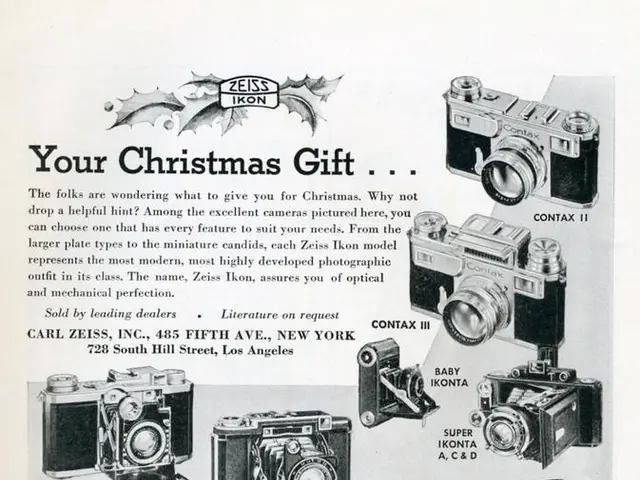Virtual Clothing Trial with Google AI: A New Way to Shop Online
In a groundbreaking move, Google has launched an AI-powered virtual try-on tool for apparel, allowing U.S. users to model clothing in Search, Shopping, and Images. This development marks the arrival of the "Clueless"-style closet simulations in the e-commerce world, signalling a fundamental shift in how consumers discover, evaluate, and purchase products online.
The tool uses computer vision and garment-mapping algorithms, trained on thousands of apparel categories, to accurately drape clothing over user photos. Google's AI features are deeply integrated across its platforms to deliver a unified shopping experience.
Brands can capitalize on this feature by promoting "try it on" calls to action in their ad copy and on social channels. To leverage this virtual try-on experience effectively, brands must tailor their assets.
High-Resolution, Full-Body Images: Brands supply clear, high-resolution images of apparel that show fabric texture, fit, and drape. These images help the AI generate realistic visualizations of how clothes fold, stretch, and fit on different body types or user photos.
Diverse Model Representation: Brands submit images or asset variants showing the products on models of various sizes, skin tones, and hair types, supporting Google's inclusive try-on experience that caters to a wide demographic range.
Comprehensive Product Data: Products are integrated into Google’s Shopping Graph with detailed metadata including size, color options, and style information. This metadata enables Google’s AI to customize the try-on experience, such as allowing users to select colors or sizes to visualize.
Integration Across Google Platforms: Brands’ assets are optimized for display across multiple Google interfaces, including Google Search, Shopping, and Google Images. This cross-platform presence ensures that the try-on feature can be accessed seamlessly wherever a product appears in Google’s ecosystem.
Compatibility for AR Overlays (Beauty & Apparel): For beauty products like lipstick or foundation, brands provide assets that facilitate real-time AR overlays on users’ faces via phone cameras. For apparel, generative AI models create image-based try-on renderings, so the assets must be suited for both AR and AI-generated image processes.
By preparing assets in these ways, brands help Google’s AI accurately visualize products on the user or diverse model types, improving user confidence, reducing returns, and increasing engagement.
Google also plans to extend the virtual try-on feature to help users redecorate living spaces and introduce "Vision Match" within Search Labs' AI Mode in the fall. This feature will allow shoppers to enter natural-language queries and receive a visual montage of matching outfits or furniture and decor.
Moreover, enhanced price alerts are now available, enabling tracking by size, color, and target price across the entire web. Retailers may need to rethink how they photograph apparel, perhaps favouring on-model shots against neutral backdrops to facilitate AI mapping.
This development is expected to become the default across all shopping categories, as virtual dressing rooms migrate from niche experiments to mainstream offerings. Brands are encouraged to tailor assets for virtual try-on, leverage dynamic pricing alerts, and supply high-quality inspiration visuals.
Brands should optimize their assets by providing clear, high-resolution images of apparel to ensure the AI generates realistic visualizations of clothing on different body types or user photos. This includes submitting images of products on diverse models to support an inclusive try-on experience and supplying comprehensive product data for customization like colors or sizes.
Since Google plans to extend the virtual try-on feature to redecorate living spaces and introduce "Vision Match" in the fall, retailers may need to rethink how they photograph apparel, potentially favouring on-model shots against neutral backdrops for better AI mapping.




